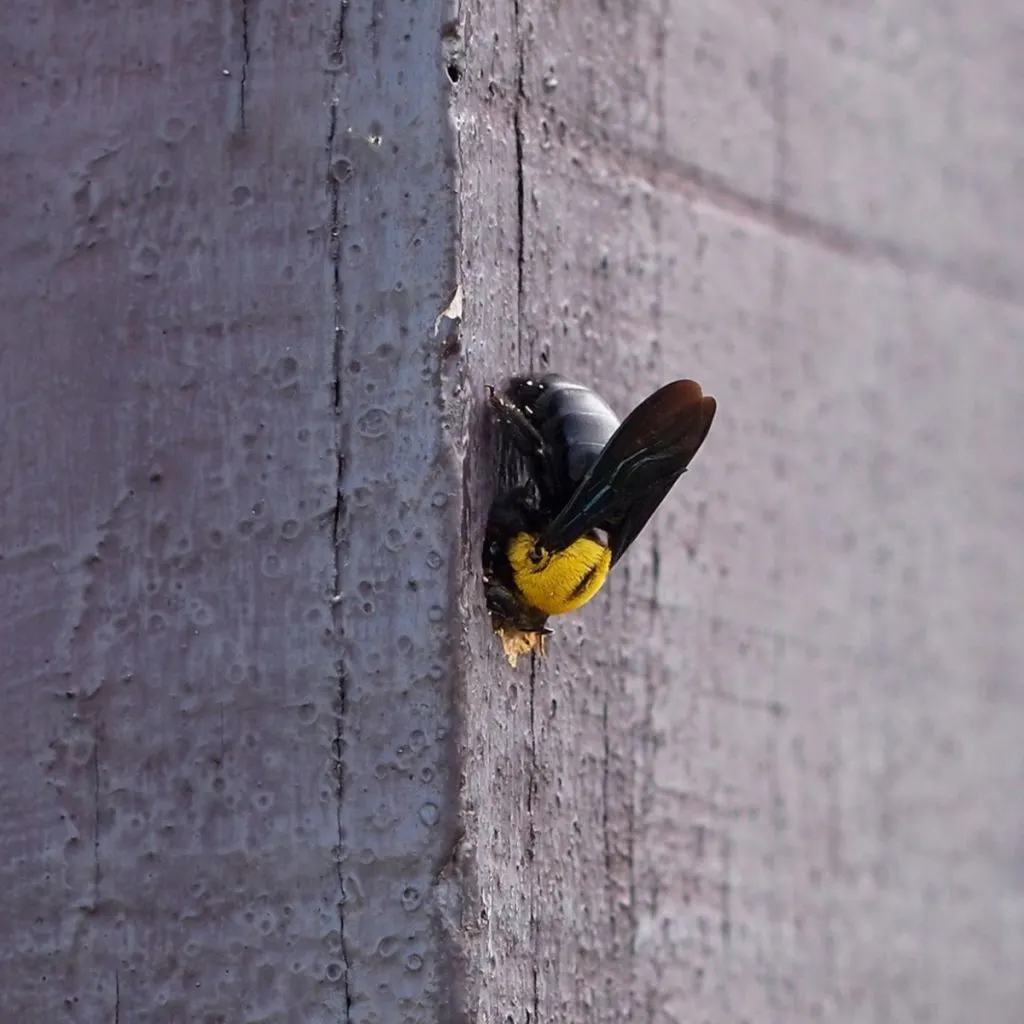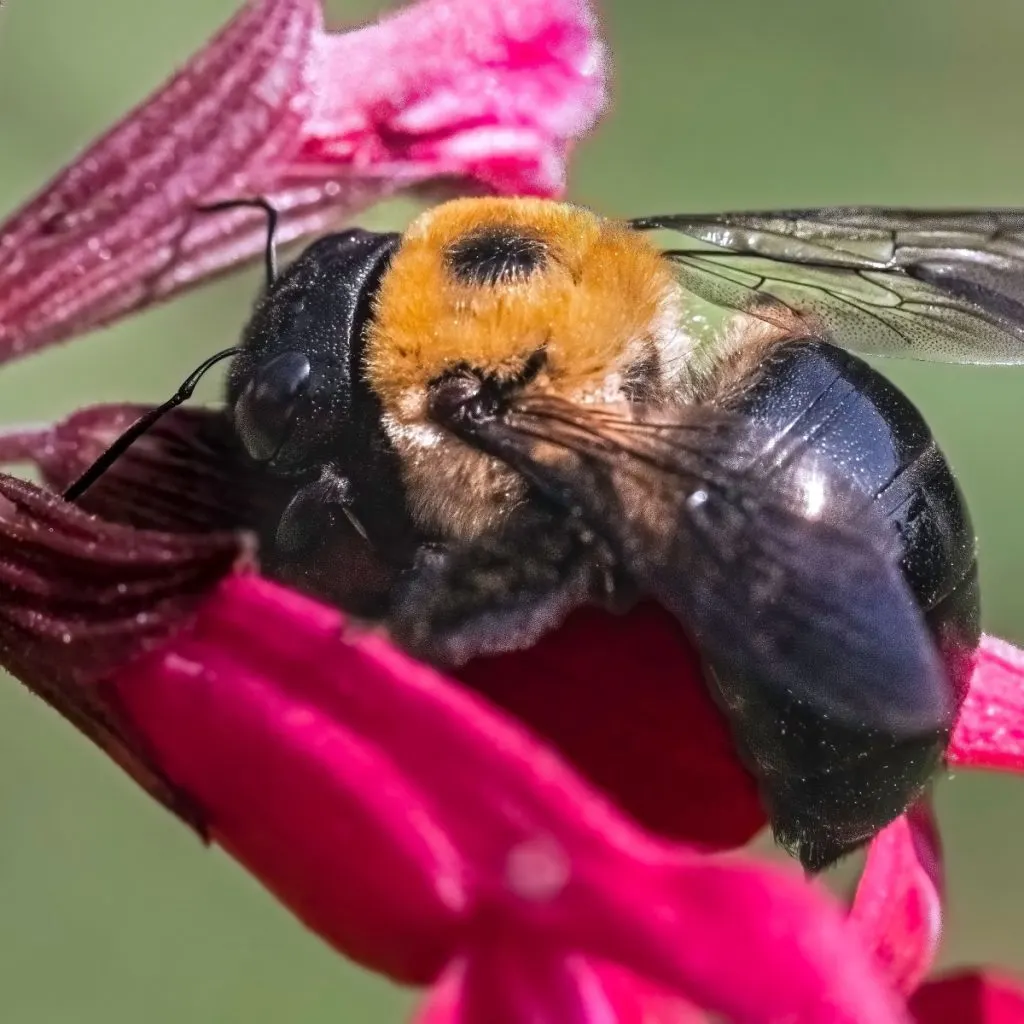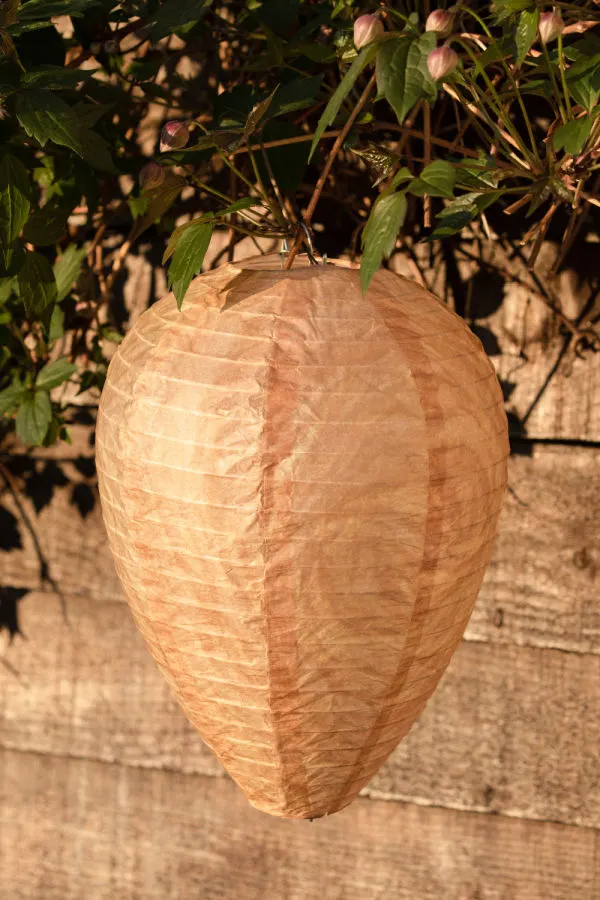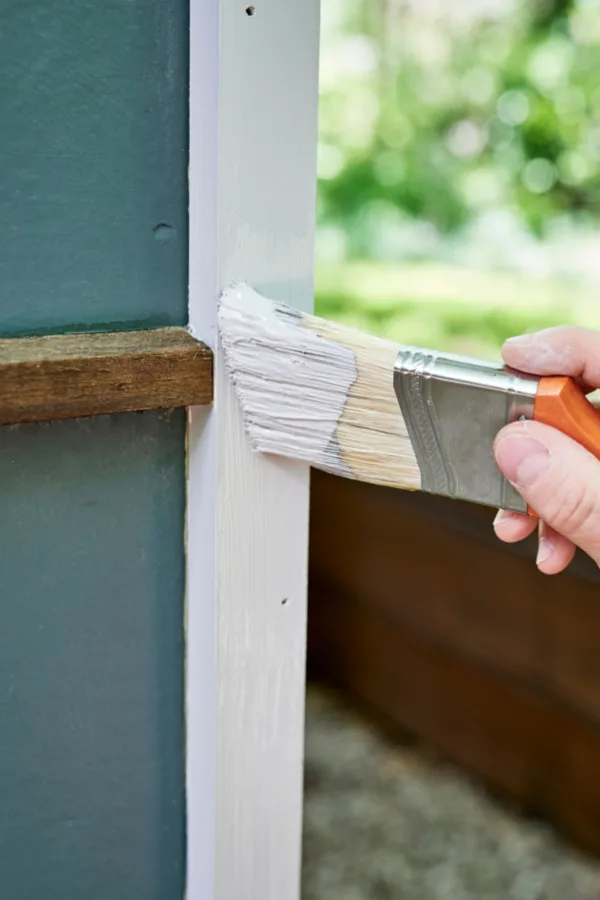Looking for a few tips and secrets to protect your home and outdoor structures from carpenter bees – and stop the damage they cause to the wood surfaces on them?
As spring arrives, so do carpenter bees. And can they ever destroy the wood on your home, garage, shed or barn. If that wasn’t enough, they also have little trouble drilling into the wood and damaging fences, swing sets, gazebos or pergolas. One thing is for certain, if it’s made of wood and outdoors – it’s fair game as far as carpenter bees are concerned.
Unlike many insects that might only affect a certain climate or specific location, carpenter bees exist almost everywhere. In fact, there are hundreds of varieties that together inhabit nearly every corner of the globe. And wherever they are, they cause damage!

Carpenter bees are in the same family as the honeybees and ground bees. But unlike honeybees, carpenter bees do not live in hives – nor do they live in the soil like ground bees do. Instead, carpenter bees live and nest in small holes that they drill into wood. Holes so perfect you would swear they were made with a precision power drill and drill bit.
All About Carpenter Bees – 3 Secrets To Stop Carpenter Bees
It is the female carpenter bee that does the damage to wood. And she drills the holes to make a nest to rear the next generation of bees. The male’s job, meanwhile, is to protect the nest. Although neither the male or female has stingers and cannot sting, the male will hover around the nest area and dive bomb anyone that gets close to the nest.
The real issue with carpenter bees is they will keep drilling bigger and farther each year. Once they appear and make their nest, they will continue to excavate more wood in the nest to lay more larvae. In fact, if enough years go by unnoticed, it can even be severe enough to make wood beams structurally insecure.
There is some good news – carpenter bees are really only active in the early to mid spring time period. That means if you can protect your wood surfaces through late spring – you are in good shape for the remainder of the season.

But when it comes to protecting, one thing is for certain, it’s far better to get carpenter bees to find suitable homes nearby in dead wood and trees than to kill them. Why? Because they are one of nature’s most active and helpful pollinators. So keeping them around is incredibly helpful for your garden, flowers and more.
Luckily, with the 3 simple and all natural methods below – you can keep your wood and structures safe – along with carpenter bees!
3 Secrets To Stop Carpenter Bees & Protect Your Home
#1 Use Fake Paper Wasp Nests
When it comes to predators that strike fear into carpenter bees, paper wasps and hornets both are at the top of the list.
Wasps are extremely fond of the larva of carpenter bees. They will often attack and rob carpenter bee nests of the larva. Because of this, carpenter bees try to avoid building nests anywhere near wasp or hornet nests.
Of course, no one wants to deal with wasps flying around – but by simply installing a few fake paper wasp and/or hornet nests, you can keep carpenter bees away. Almost without fail, when they fly in to build and see a nest – they simply move on.

The good news is you can readily purchase some pretty realistic fake nests – and relatively inexpensively. Even better, they can be reused for multiple years to provide protection. Product Affiliate Link: Wasp Nest Decoy – 4 Pack – Hanging Fake Wasp Nest
#2 Use Eucalyptus / Orange Oil Concentrate – 3 Secrets To Stop Carpenter Bees & Protect Your Home
Beyond using a fake wasp nest, you can also spray exterior wood surfaces with either orange oil or eucalyptus oil. Carpenter bees are not fond of the smell of either in the least. And if a surface has either scent on it, they are highly unlikely to drill into it or anywhere near it.
In addition to protecting the wood surfaces, the oils are also great to spray on any new holes that the bees have started to drill – or in existing nests to help clear them until you can plug them.
- Product Affiliate Link: Calyptus Orange Oil Concentrate
- Product Affiliate Link: 100% Pure Natural Undiluted Eucalyptus Essential Oil
To use, mix 20 to 25 drops of essential orange or eucalyptus oil for every two ounces of water. You can then either spray directly on surfaces or use a cloth to wipe down surfaces to protect them. As always, test a small area first to make sure the spray does not discolor the surface.
When using this method, you will need to reapply regularly to keep the scent’s effectiveness. For best protection, spray weekly during the early spring when carpenter bees are most active.

#3 Keep Wood Surfaces Painted & Sealed – 3 Secrets To Stop Carpenter Bees & Protect Your Home
Last but not least, one of the best ways of all to protect your home, garage and outbuildings from carpenter bees is to put a fresh coat of paint or sealer on any and all wood surfaces. Wood that has been painted within the last few years is usually safe – but anything more weathered can often be drilled into by carpenter bees.
Carpenter bees prefer untreated and unfinished wood. This is exactly why they gravitate to fences, barns and other areas where wood is often not protected. But they are also much more likely to drill into highly worn painted or stained surfaces.
It’s not that carpenter bees won’t drill into painted wood – but they are highly unlikely too. Especially if the painted surface is relatively recent in the last few years. The biggest reason for this is that the paints contain ingredients that both offend and harm the bees while drilling.
The stronger the sheen, the better. High gloss, gloss and semi-gloss paints are all highly resistant to carpenter bees. Satin and flatter paints still have good resistance to carpenter bees – but slightly less than the harder coatings.

Paint Versus Stain – 3 Secrets To Stop Carpenter Bees & Protect Your Home
What about stained wood? Although stain is still much better than bare wood, it is not as effective as paint. If you do have stained wood, putting on a fresh coat of clear sealer will make it much more resistant to carpenter bees.
Sealer is also a great option to protect any unpainted surfaces as well that may be outside of your home. Again – apply at least every two to three years to maintain effectiveness.
One final note, it is important to repair and fill any old holes as soon as possible. Before doing so, be sure to remove any larva. By plugging the holes with a wood filler, you will keep carpenter bees from creating a condominium in your wood!
There you have it – 3 great ways to help stop carpenter bees – and protect your home from their damage in the process! For more on controlling common pests, be sure to check out our article How To Eliminate Grubs With Ease!
This Is My Garden
Follow Our Facebook Page For Great Gardening Tips And Advice! This Is My Garden Facebook Page
This Is My Garden is a garden website created by gardeners, for gardeners. Jim and Mary Competti have been writing gardening, DIY and recipe articles and books and speaking for over 15 years from their 46 acre Ohio farm. They publish three articles every week, 52 weeks a year. Sign up today to follow via email, or follow along!
